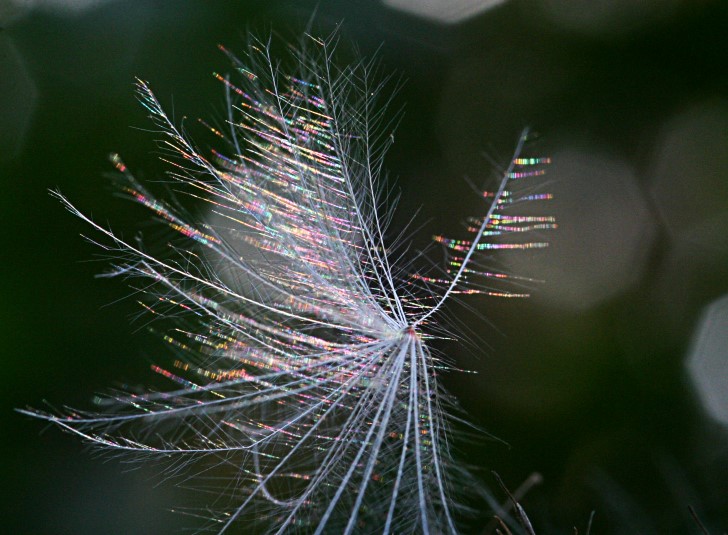
Helga Schöps searches ardently for color dispersion effects in nature (like
this close up of the banded diffraction pattern). Rainbows are not the only source. Helga photographed these recently at Hermsdorf, Thüringen, Germany.
One is evidently a partial rainbow produced by dew drops on the fine hairy structure. The other
colours in the thistle seed heads are more mysterious. Do you have an explanation?
posted by Claudia Hinz & Les Cowley
Mysterious indeed..the colours are very pure, sort of UV like.
ReplyDeleteI have seen same looking but several times more intense dispersion effect on the Common Reed (Phragmites australis).
Isn't it the same colourful effect that we can observe when we photograph a spider's web or a worm's web somewhat out of focus?
ReplyDeleteTwo examples:
http://www.dameragnell.extra.hu/pok1.jpg
http://www.dameragnell.extra.hu/hernyo.jpg
I guess, the colours are caused by the interference of rays that are being scattered by the tiny hairs of the seed. In case of spiderwebs, what scatters rays is the small droplets that the web is made out of.
Agnes, some colours of the banded variety occur even when the hairs or web are microscopically devoid of small droplets. Spider webs are sophisticated structures, some silk threads have droplets, some do not.
ReplyDeleteLes Cowley
We simply have to put this thistle hair under a microscope to find the exact answer... Most of these flying seeds have a hair structure like feathers: the tiny hairs just have even smaller hairs, and these more tiny hairs also have some even more tiny hairs... The smallest fibers' (mostly made of cellulose -that build up the seed hairs) diameter is about 10-50 microns, but they vary in diameter.
ReplyDeleteWhat I was thinking of was the tiny hairs that can possibly be found on the hairs visible to the naked eye. Exactly what Noli mentioned. Surely, the only thing that can help is a microscope, but as far as I know, several plants of the Asteraceae family have these microscopic fibers.
ReplyDeleteSome of the effects seen in this seed-head are very similar to those seen in spider webs,... see my recent posting of the banded patterns.
ReplyDelete